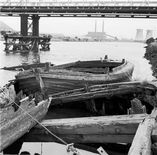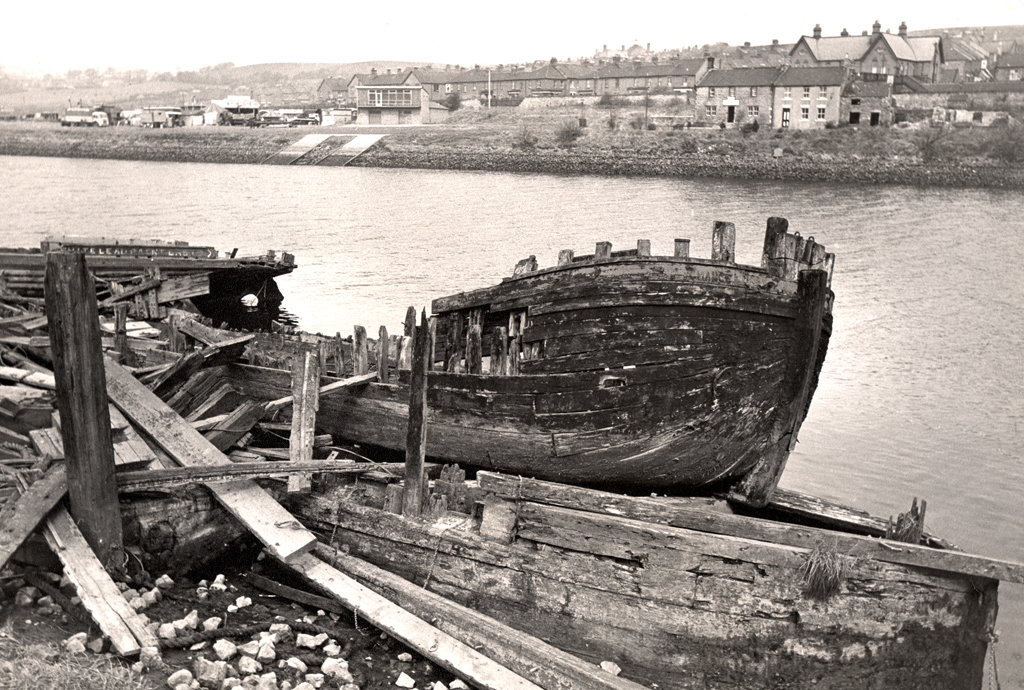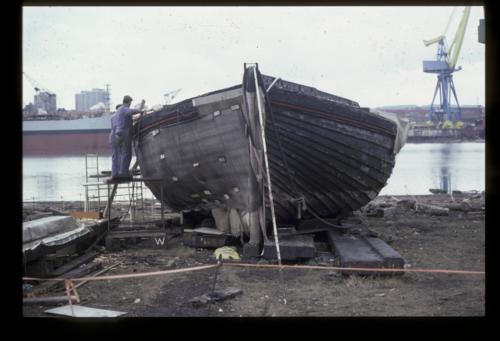The construction technique for the hulls is of overlapping planking sealed with caulking (rags of hemp soaked in tar), known as clinker construction. Each plank overlaps the one below it, and a fixing nail is driven through the overlap, and bent over (clenched) a metal washer called a rove. Scatters of clench nails and roves were recorded among the timbers at Ryton. This is a very ancient technique; vessels sailed down the Tyne by the Roman navy would have been clinker-built, as indeed was the Sutton Hoo ship and all Viking long-boats. Cullercoat cobbles continue the tradition, but after the time of Henry VIII, most other craft are made of end-butted planks, sealed with pitch, a technique known as carvel planking which is much easier to repair than clinker planking.
Two keelmen worked on each wherry. There was a cabin into which they had to lower themselves, with two bunks for sleeping, a fire and cooking utensils. A wherry could carry loads of 65 to 85 tons and when fully loaded, the top of the craft would only be 18in above the water. Many frequently sank and had to be salvaged along with their cargo. There was a walkway 18in wide only separated from the drop into the open hold by an 8in high batten. William Gardner's wherry operated from Cowan's brickworks at Blaydon, from where fire-bricks were sent all over the world. A full load of some 20,000 bricks was loaded and unloaded by hand.
Tyne-side seem’d clad wiv bonny ha’s,
An’ furnaces sae dunny;
Wey this mun be what Bible ca’s,
“The land ov milk and honey"
If a’ thor things belang’d tiv I,
Aw’d myek the poor reet murry;
An’ cheer the folks i’ gannin by,
Iv Jemmy Joneson’s Whurry.
Tyne and Wear Specialist Conservation Team Annual Report 2009.
'Elswick No. 2' wherry on Sitelines.
'The Last Tyne Wherry - Elswick No. 2', information sheet by Tyne and Wear Museums.
Taylor, Patrick, and Williams, Alan (2010). The Newburn wherries: remnants of the River Tyne's industrial past. Archaeologia Aeliana 5th Series, Vol.39: 401–25
Remains of the Ryton Wherries on Geograph.














 RSS Feed
RSS Feed
